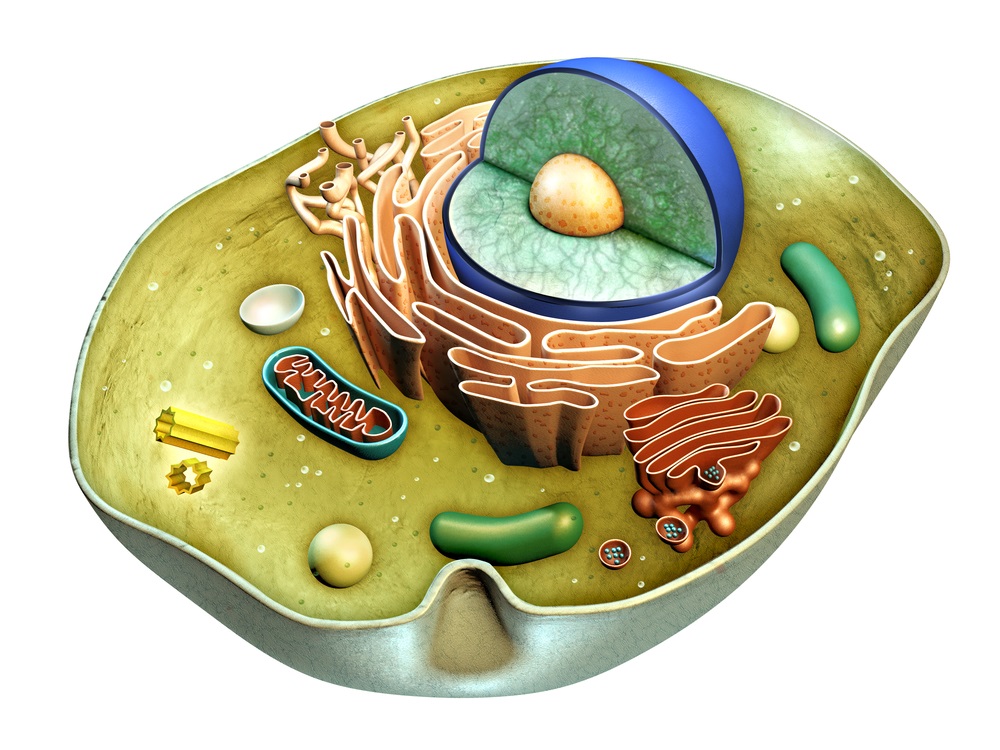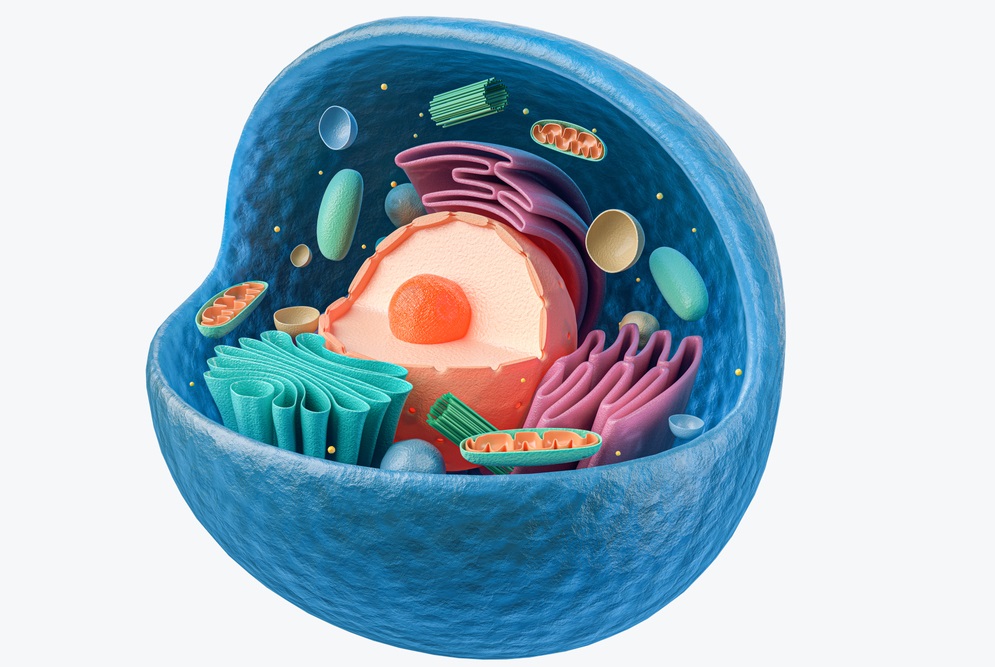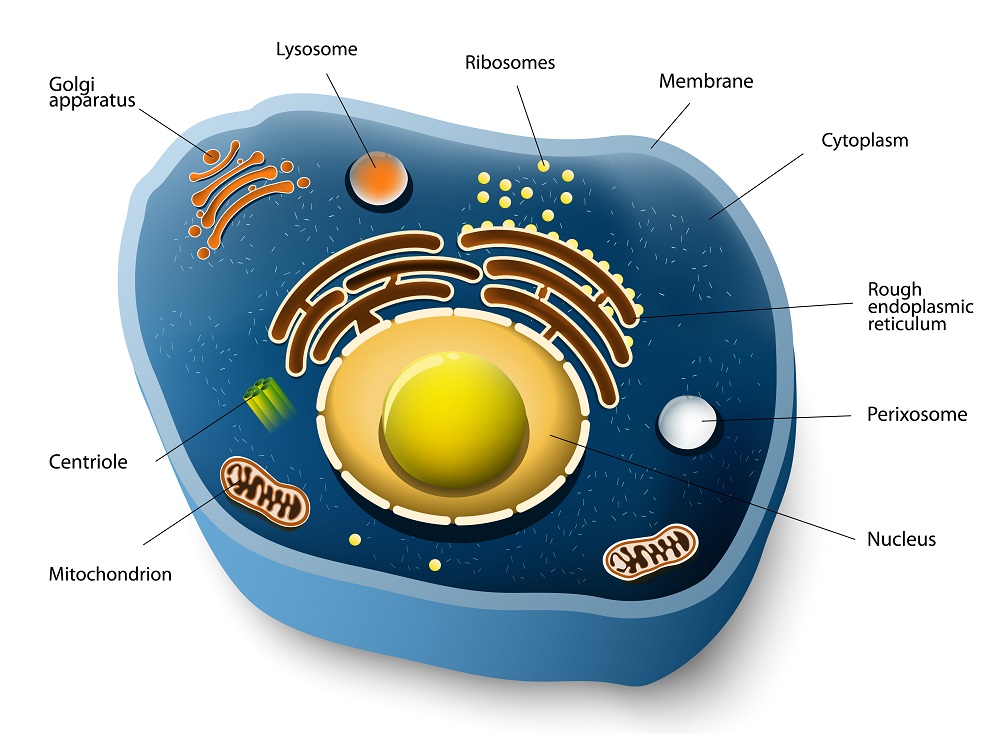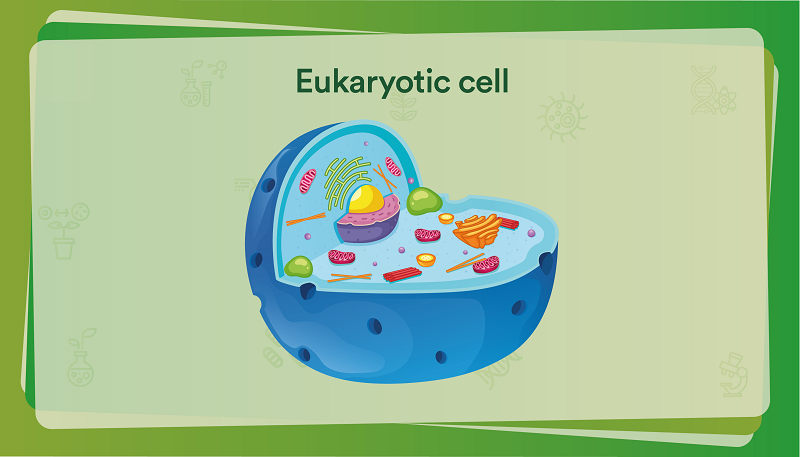
Animal Cell 3D Model – Definition, Parts, Structure, and Diagram in Metaverse

Cells are the basic building blocks. All life is made up of cells. All plant and animal cells are made up of cells. There are several differences between animal and plant cells, including their structure and function.
It is essential for school students studying biology to understand the structure and components of animal cells.
Animal 3D Cell Model

Here we will examine what an animal cell is, the different parts that make up an animal cell, and how they all work together to form one of nature's most complex structures. An Animal Cell 3D model will be highly helpful to students to demonstrate the parts and functions of an animal cell.
So let's get started!
Animal Cell- Definition
Animal cells like plant cells are eukaryotic, meaning they have a nucleus enclosed by a membrane. The difference between them is that plant cells have a cell wall, while animal cells have a nucleus enclosed in a membrane. Animal cells are smaller than plant cells.
Animal Cell Parts and Function

There are 13 main parts of an animal cell. These are:
1. Cell Membrane
The cell membrane is responsible for a lot! It protects the cell, controls what goes in and out, and helps it communicate with the outside world. It also gives the cell its shape and helps it stick to other cells to form tissue.
2. Nucleus
The nucleus is like the command centre of the cell. It's responsible for duplicating and storing genetic information, and it also makes ribosomes.
3. Nucleolus
Called as the brain of the nucleus, it plays an important role in protein synthesis and the production of ribosomes.
4. Nuclear Membrane
The membrane governs the heredity traits and controls cell growth and division
5. Cytoplasm
The cytoplasm is like a container that holds water and nutrients.
6. Endoplasmic Reticulum
Endoplasmic Reticulum (ER) is the eukaryotic cell's largest and most important organelle. The ER is responsible for protein and lipid synthesis.
7. Golgi Apparatus
The Golgi Apparatus is responsible for processing and transporting proteins to other parts of the cell or outside the cell.
8. Ribosomes
Ribosomes are like little factories that create proteins; the nucleus tells them what to make. They help produce proteins from amino acids. This process is called protein synthesis.
9. Mitochondria
The primary function of the mitochondria is to convert food into energy and assist in cell growth and repair.
10. Centrioles
Centrioles help with chromosome movement within the cell
11. Cytoskeleton
The cytoskeleton is like the cell's skeleton. It gives the cell structure and rigidity. The cytoskeleton also helps with the movement of organelles and chromosomes.
12. Vacuoles
They are mainly responsible for storing water, food, and waste. In animal cells, they also help to remove harmful pathogens
Vesicles.
They perform both intra-cellular and inter-cellular functions. They are important in cell communication and cellular transport.
Animal cell diagram
Animal Cell Structure

A cell's shape and movement are facilitated by the cytoskeleton. The cytoskeleton gives the cell its structure and allows it to move. Animal cells come in a wide range of sizes and shapes.
The ostrich egg is the largest known animal cell and its cell size measures over 5.1 inches across, whereas a human neuron measures just 100 microns across.
The majority of animal cells are microscopic and are only visible under a microscope. They can be flat, oval, curved, spherical, concave, or rod-shaped. Bacteria differ from animal cells by their size, nucleus, and organelles.
However, some bacteria cells, known as archaea, are similar in size to animal cells. These can be clearly demonstrated in an Animal Cell 3D model.
How Do Animal Cell Function?
The smallest unit of life is the cell, and it does a lot! They produce energy by breaking down nutrients and storing it for later. They also make proteins, which are shaped according to a blueprint in the nucleus.
Multicellular organisms form tissues when cells work together. These tissues then form organs when they work together.
Differences between Plant Cells and Animal Cells
The key differences are listed below. Students can enjoy an interactive view of Animal Cell 3D model in the educational metaverse developed by Edverse.
| Animal Cells | Plant Cells |
| Smaller in size; length range is from 10 to 30 micrometers | Larger in size; length range is from 10 to 100 micrometers |
| Animal cells come in all sorts of sizes and shapes. | Plant cells are more similar in size and tend to be either rectangular or cube shaped. |
| Animal cells do not have a cell wall | Plant cells have a cell wall |
| Animal cells have cell membrane | The cell walls of plants are made op cellulose and cell membranes |
| The nucleus is in the centre | The nucleus is on the side |
| Animal cell have several vacuoles | Plant cells have only one Vacuole |
| Cannot make their own food | Can make their own food |
Frequently Asked Questions
What is the Command Centre of an Animal Cell?
The nucleus is the command center of a cell, and it is where most of the cell’s DNA is stored. It is enclosed in a double membrane with pores that allow molecules to move between the nucleus (nucleoplasm) and the cytoplasm.
What are Eukaryotic cells?
Eukaryotic cells are distinguished from prokaryotic cells by having membrane-bound organelles such as a nucleus, mitochondria, and an endoplasmic reticulum. All plants and animals are based on eukaryotic cells and are grouped into the biological domain Eukaryota.
Eukaryotic cells are generally larger and more complex than prokaryotic cells found in the domains Archaea and Bacteria.
What is a 3D model?
3D technology is used to render dimension to physical objects. 3D models are being extensively used in k-12 and higher education to help students visualize and learn better.
What are the benefits of studying an Animal Cell 3-D Model?
Learning about an animal cell 3D model offers better academic output. Students can minutely observe and understand all details in 3D. They can hold the cell and manipulate it for a better view. 3D renderings of educational content enable higher learning outcomes.
Can 3D models be used for all types of Educational Content?
Yes. 3D modeling technology is an excellent educational tool. It helps teachers to explain better and students to understand better. It can be used for all types of educational content.
What is the Educational Metaverse?
The Metaverse is a term for a global, immersive, 3D environment that can be shared and interfaced by multiple users. An educational metaverse will be a digitally-enabled learning environment where students, educators, and content providers can gather and interact with each other.